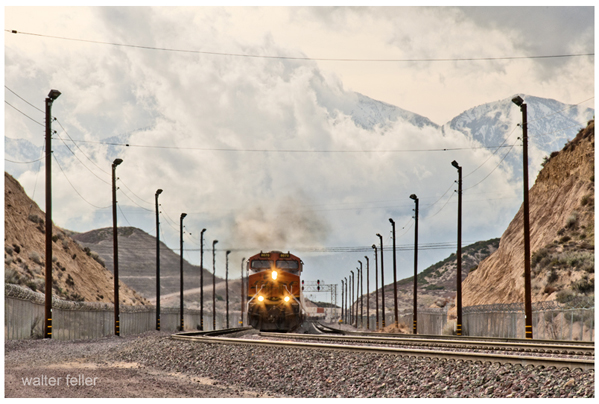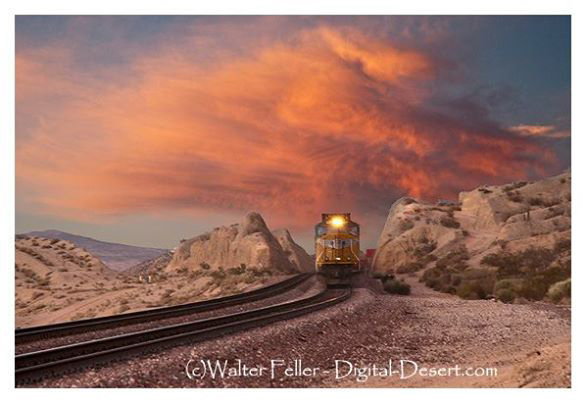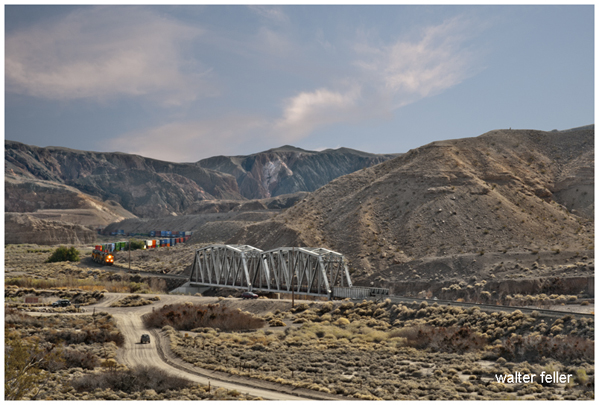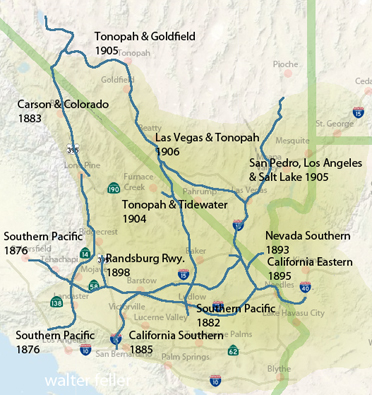Railroads of the Mojave Desert
The railroads of the Mojave Desert tell the story of how steel tracks transformed an isolated land into a crossroads of commerce, mining, and migration. From the first transcontinental lines in the late 1800s to the web of mining railroads that followed, trains carried borax, copper, and gold out of remote camps and brought supplies, workers, and settlers in. Towns like Barstow, Daggett, and Kelso grew as rail hubs, while desert outposts flourished briefly on the promise of ore. Though many lines vanished, their traces still shape the Mojave’s history and landscape.
Cajon Summit

Helendale

Afton Canyon
Chronology
Historic Class I Railroads
Historic Class II Railroads
Trans-Mojave Railroad

Atlantic & Pacific Railroad
California Eastern Railroad/Railway
California Southern Railway
Carson and Colorado Railroad
Las Vegas & Tonopah
Nevada Southern Railway
Randsburg Railway
San Pedro, Los Angeles and Salt Lake Railroad
Santa Fe Railroad (Santa Fe Railway)
Southern Pacific Railroad
Tonopah & Tidewater Railroad
Union Pacific Railroad
Kelso Depot
Casa del Desierto
Garces Harvey House
Railroads around the Mojave National Preserve
Defying Death Valley
Railroad Depots, Stations & Eating Houses
History of Transcontinental Railroading in Arizona, 1878-1949